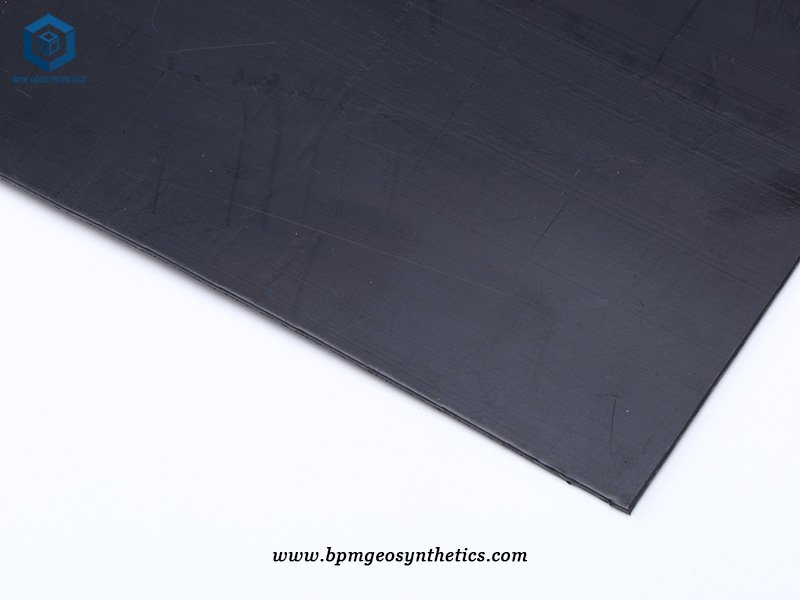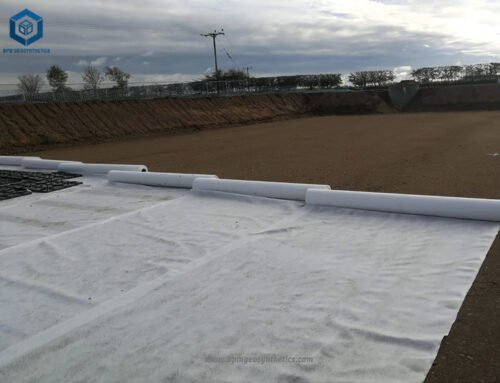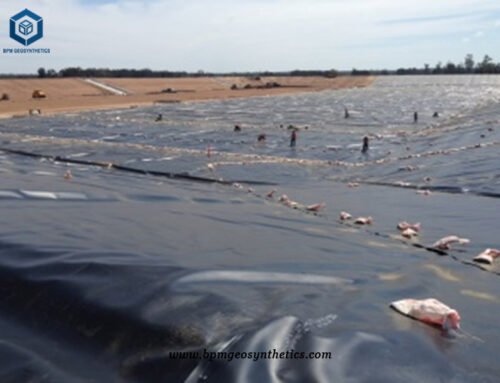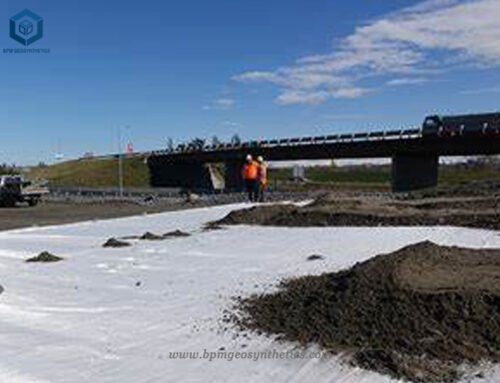India is located at the the greater part of South Asia. Its capital is New Delhi, built in the 20th century just south of the historic hub of Old Delhi to serve as India’s administrative center. Its government is a constitutional republic that represents a highly diverse population consisting of thousands of ethnic groups and likely hundreds of languages. With roughly one-sixth of the world’s total population, India is the second most populous country, after China. And they has vast experience in providing safe and effective solutions to water treatment systems.
The Best Project Material Co., Ltd (BPM) is the leading geomembrane manufacturer, supplier, wholesaler and exporter, BPM Geomembranes are widely used across a variety of industries including waste, water, aquaculture, mining, power plant, industrial and civil engineering, etc.
Geomembrane pond liner manufactured from polymers such as high density polyethylene (HDPE), linear low density polyethylene (LLDPE), and even more sophisticated polymer alloys are used very effectively in reservoirs to contain potable water, and in waste water treatment plant lagoons to prevent contamination of the groundwater. But performance problems sometimes occur that are the result of inexperienced design, sometimes poor installation, but rarely inadequate liner material.
The predominant problem is an assumption by the design engineer that an installed geomembrane pond liner india will not leak. It may not, but the chances are that it will. While this appears counter-intuitive, it is a design philosophy that experienced engineers and regulators have come to accept to the benefit of all since the early 90s.


1 Geomembrane Pond Liner for Waste Water Treatment Project
When waste water leaks through a liner and remains in the sub grade soil microbiological reactions continue, water reacts with any organic matter in the soil, and gases (mostly methane) are generated. The gases collect under the liner of the lagoon which is often designed with a flat floor. The gases then lift the liner until it becomes influenced by the water being drawn toward the aerators ultimately contacting the aerators. The liner is torn, increasing the leakage rate and damaging the aerators. Increased leakage accelerates the formation of “whales”; large blisters of liner above the surface of the water . Typically the whales contain gas above the water line and leaked water below the water line. Thus the level of water below the liner is the same as that above the liner.
One solution to these construction concerns might be to install thick concrete embedment liner on top of the concrete slab poured on the sub grade, take extra care in compacting the sub grade at the edges of the slab (with sub grade surface level with embedment liner surface), then to weld the geomembrane liner india to the concrete embedment liner. In this way there is a continuous geomembrane liner that can be tested for leaks electrically, and there is no danger of the liner under the aerator being uplifted.
2 Specifications of Geomembrane Pond Liner India for Waste Water Treatment Project
- HDPE Membrane Linerthickness – 1.5mm
- Total Quantity- 17,640 Square meters
- Each roll Size- 7m*140m
- Standard- ASTM GM13 standard
Geomembrane Pond Liner India Installation for Waste Water Treatment Project
Installing geomembrane pond liner india is a complicated process that is generally carried out by trained engineers and technicians. Various specialized welding techniques, site preparation, and installation expertise are required to ensure that any geomembrane lining system is properly employed. The general, yet illustrative, geomembrane pond liner installation process is as followed.
- Quality Assurance Inspection. The following items are reviewed to ensure quality geomembrane pond liner india installation.
- Surface conditions met all requirements before the lining was laid
- The geomembrane rolls were deployed and identified correctly.
- The anchor system was done correctly.
- The anchor trench and the placement of the lining were all done correctly.
- The correct welding equipment was used.
- The quality control devices were operating correctly.
- Verified the fusion welding seaming and/or extrusion welding seaming.
- All repairs were completed.
- Correct pipe penetration.
- The seam crossings were accurate.
- The installation was done per the original design.
- The documentation of the installation was completed.
Quality assurance is an ever present standard before or during and once the project is complete. Supervisors maintain a presence on the work site at all times to ensure that all the geomembrane pond liner india installation procedures are correctly implemented. Detailed logs are maintained to record work progress, as well as any issues that occur and how they were resolved. In turn, these records are reviewed by a field manager, providing one further layer of quality assurance inspection.
Pre-Field Installation. Preparing for the installation is the initial step. The following decisions need to be considered.
- Specifications of the geomembrane that will be used.
- The type of anchoring system that is needed.
- The quantity of geomembrane lining.
- Which quality controls will be in place.
- What are the weather conditions as temperatures play a significant role in if and how the installation process will be completed.
Receiving, Storing and Handling. The following factors need to be considered when the product arrives.
- It is required that each roll have an identification number and quality certificate.
- Unload the rolls with approved equipment to prevent damage. Spreader bars or lifting straps can be utilized to accomplish this.
- Visual inspection of the outside of the rolls should reflect that there are no holes, tears or bubbles. Any non-conformance damage that is identified will be noted and recorded. Non-conforming material will either be repaired to conformity, or used in a manner that is appropriate to its use.
- The surface of the storage area needs to be free of stones and any items that could puncture the linings, mud, grease and chemicals. The rolls can be placed on wood platforms or sandy mattresses. The surface should also not be near a heat source. Rolls should not higher than 3 on top of one another
- The storage location needs to be in a location that minimizes the handling of the lining.The actual geomembranepond liner india installation has many steps within the entire process.
While the installation process is an involved endeavor, the required effort only illuminates the utility of geomembrane lining systems as a proven commodity for pollution containment.
Quality Control for Geomembrane Pond Liner India
Quality standards are crucial when purchasing geomembrane liner for your project. HDPE geomembrane’s physical properties such as tensile strength and tear resistance are calculated based on test methods specified by ASTM and GSI.
ASTM International. Because of their extensive history in this field, the American Society of Testing and Materials (ASTM) is responsible for the bulk of generic geomembrane test methods.
Geosynthetic Institute (GSI) is a group of organisations involved in geosynthetics. They provide comprehensive standards, specifications, guidelines and practices for all types of polymeric geosynthetic materials through Geosynthetic Research Institute (GRI.) GSI includes test methods that are not addressed by ASTM.


3 Geomembrane Pond Liner India Manufacturing Process
The HDPE geomembrane pond liner manufacturing process begins by choosing the suitable polymer resin which is normally in pellet form. Next, different additives such as carbon black, plasticizers, antioxidants and lubricants are added. The formulation of resin and additives are then fed into a hopper which leads to an horizontal extruder. This formulation is transported via a continuous screw through feed section, compression, metering and filtering stages, after which it is pressure fed into a die to create sheets of varying widths and thicknesses by calendering.
Additives are added in the formulation to prevent oxidation and increase durability. Carbon black is sometimes added to the formulation to improve its stability under ultraviolet light, making black HDPE one of the most UV resistant products on the market.
4 Important factors for Geomembrane Pond Liner
Several factors affect the degradation of polymers within the geomembranes. Factors like UV exposure, chemical impact, biological contaminants (animal, fungi) and thermal expansion impact the life span of the geomembranes.
Technical expertise is necessary when selecting the right type and thickness for the project. This is generally based on the depth of the containment and the geo technical conditions of the site.
Please see the corresponding depth and thickness chart for a general overview. This is for guidance only, speak to one of our technical consultants for advice relevant to your requirements.
5 Conclusion
Determining the best type of geomembrane for your project can be challenging. Several factors such as cost, availability and applicability come into play.
Of all the geomembrane types, HDPE pond liner is the most recommended because of its operational advantages. It complies with the environmental sustainability requirements, is cheaper than other geomembrane types and has a variety of applications. With its excellent mechanical qualities and long durability, HDPE geomembrane is a cost-effective solution for seepage control and leakage prevention in reservoirs and dams.
BPM has been specializing in delivering one stop geosynthetics products and solutions to worldwide customers since its foundation in 2007. BPM had provided many types of effective and state of the art geomembranes, geotextiles, geocells, geosynthetic clay liners (GCLs), drainage boards, geogrids to over 81 countries.
BPM is not only manufacturing best quality geosynthetic products but also providing professional design and installation service. OEM, ODM, custom development and fabrication are also available. If you have any questions or inquiries, please contact us, we will reply as soon as possible.





